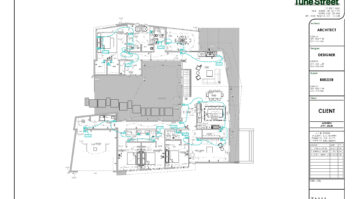Of all the things Ive done, the most vital is coordinating the talents of those who work for us and pointing them toward a certain goal.
Walt Disney
In 1903 Frederick Taylor coined the phrase Scientific Management to describe what is known as the Traditional Paradigm. He and other contemporaries, like Max Weber, believed organizations needed to be standardized and centrally controlled. For this reason, the Traditional Paradigm is often called the Command and Control Model.
Until recently, the basic principles of this model dominated peoples thinking within organizations:
- Simple, narrowly defined jobs
- Division of labor that keeps different functions separate
- One best way to do a job
- Uniform and strictly enforced policies
- Managements role to control the means and speed of work.
Out with the Old Paradigms
Although the Traditional Paradigm may have been useful in moving us to an industrial society, it does not fit with the complex and changing nature of the economy, market place, technologies, and people today. It is seriously flawed in two primary ways.
First, traditional organizations are structured around functions. For example, in a manufacturing company, this structure includes engineering, manufacturing, sales, etc., while in a service company it would include customer service, accounting, and billing. The problem this creates is that work is fragmented in such a way that people do not see or feel responsibility for a whole process. They over identify with their own jobs and fail to understand or care about the overall good of the company or customers they serve. This leads to poor communication, redundancies of effort, turf battles, delays in decision-making, and general inefficiency.
A second flaw of the traditional paradigm is the assumption that it is managements job to control the work of employees. Management sets goals, makes decisions, measures progress, evaluates performance, etc. Managers are the thinkers and planners, and employees are the doers. These organizations fail to tap into the tremendous intelligence and creativity of their people.
The High Performance Paradigm
In recent years, many successful organizations have embraced an exciting new way of organizing and working, called the High Performance Paradigm. This new way was developed out of a need to better use employee capabilities, to create greater flexibility, and to integrate parts of the organization around its common purpose and direction. A high-performance organization could be defined as an organization in which each person is a contributing partner to the business.
High-performance work environments require a deep respect and trust in people. People are not viewed as extensions of machines, objects to be manipulated nor costs to be controlled, but rather as thinking and feeling human beings who bring enormous energy, creativity, and talent to their work. Most people want jobs that are meaningful and allow them autonomy to make decisions and contribute to the company in significant ways. Effective organizations are those moving beyond attempting to control people to trusting and empowering them with the resources, information, tools, skills, and support to manage their work processes and create products and services of unprecedented quality.
There is an old truism, both in business and in life, that If you keep doing what youve been doing youll keep getting what youve been getting. Most leaders, owners or managers have not yet tapped the full potential of their workforce, and yet they wont do so by doing more or even better of what theyve done in the past. Only through a redesign of work and the structure of the organization, as well as the development of their people, can outstanding improvements in productivity and quality be realized.
If you would like more information on making the transition to high performance, or if you would like to receive a copy of our white paper on high performance, please send me an e-mail.






